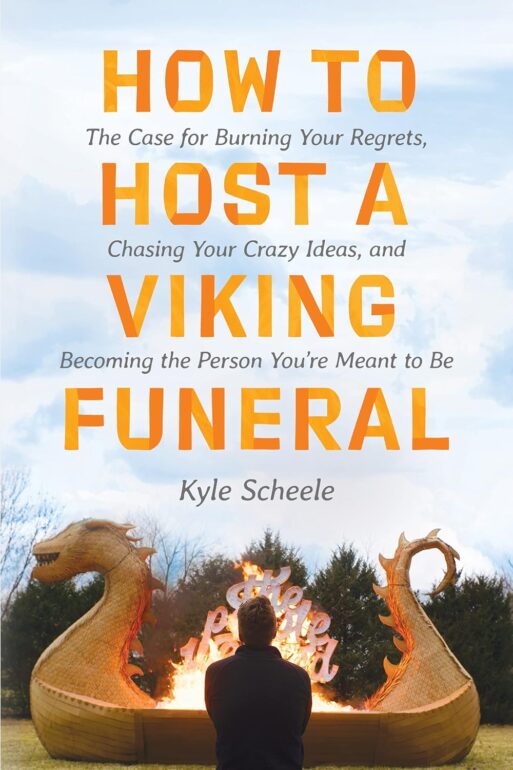
No one is immolated in “How to Host a Viking Funeral,” although more than 20,000 regrets scribbled on paper do go up in smoke, along with a rather impressive-looking cardboard Viking boat. The event, documented in this entertaining tome, was the brainchild of popular public speaker and author Kyle Scheele, who manages to turn the story of the boat’s creation and purpose into a funny, poignant and wise contemplation on regret and renewal.
The purpose of the book is clearly stated in the subtitle: “The case for burning your regrets, chasing your crazy ideas and becoming the person you’re meant to be.”

Author Kyle Scheele
Scheele, who is full of “crazy ideas,” as he enthusiastically touts on his website, came up with the idea for the regrets funeral pyre following the public response to his thirtieth birthday burn-fest. Wanting to do something different for that milestone birthday, he built a 16-foot Viking ship out of cardboard and invited friends to help him set it on fire — a symbolic farewell to his 20s and all the grief, regret and mistakes that accompanied those years.
When the video of his Viking funeral went viral, it encouraged many others to let go of past regrets as well. Inspired by the response he received, Scheele planned a second funeral, this time going big with a 30-foot Viking ship. He asked people to share their regrets — the bad choices, disappointments, heartaches and negative thinking that they wanted to lay to rest. He received more than 20,000 responses from around the world.
Several of these short, hand-written notes are displayed in the book, each revealing the personality behind the laments, making them feel genuine and touching. Many are so universal that readers will feel they could have come from their own pens. Others are less common, some heartbreaking.
“How to Host a Viking Funeral” tells the story of the 30-month journey Scheele undertook to realize his idea. “This story involves multiple Viking funerals, thousands of square feet of cardboard, and enough hot glue to supply your mother-in-law’s craft night for the rest of time,” he wrote in the author’s notes. “But it also involves regret, self-doubt, insecurity, and ultimately, redemption. So buckle up. It’s about to get bumpy.”
Years of public speaking have honed Scheele’s storytelling abilities. He skillfully weaves his reflections and ruminations on the various regrets he received into the challenging journey of bringing his artistic vision to life. Cardboard is easy to work with, but the weight of such a huge project proved daunting in that flimsy medium, not to mention finding space to build his 16-foot tall boat.
As he stumbles toward his goal through trial and error and various unexpected roadblocks, Scheele examines the five categories of regrets he has created, dedicating a multi-chapter section to each: Fears, Experiences, Identities, Relationships and Beliefs. In each one, he recalls something from his past or an issue in the ship-building process that mirrors situations that caused the regrets in that category, often finding humor in the telling of an embarrassing or painful experience.
The process reminds the reader that the battles we’re fighting aren’t so different from what the person next door is experiencing. And Scheele wisely counsels that the goal shouldn’t be to expunge our regrets from our memories — something that’s not possible for most of us anyway — but to make peace with them and move on.
In the end, often with the synchronistic arrival of donated resources or help from others, he pulls off his whimsical Viking funeral.
The hope he shares as the story closes is “that despite all we’ve done, there is room for a fresh start; that despite the pain we’ve caused, the mistakes we’ve made, the people we’ve let down, there is still tomorrow, and tomorrow is a new day.”
A crazy idea that we can all embrace.

 “How to Host a Viking Funeral” by Kyle Scheele
“How to Host a Viking Funeral” by Kyle Scheele


 First the Wealth Gap, Now the U.S. Has a Growing Health Gap
First the Wealth Gap, Now the U.S. Has a Growing Health Gap
 How to Comfort A Dying Loved One
How to Comfort A Dying Loved One
 Our Annual Seven Holiday Gifts for Someone Who Is Grieving, 2024 Edition
Our Annual Seven Holiday Gifts for Someone Who Is Grieving, 2024 Edition














